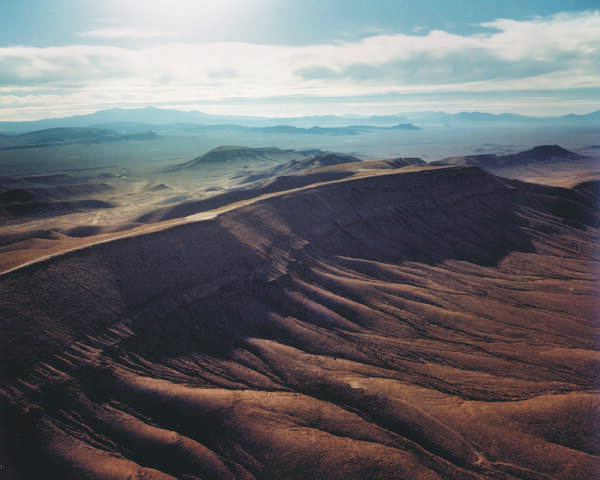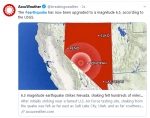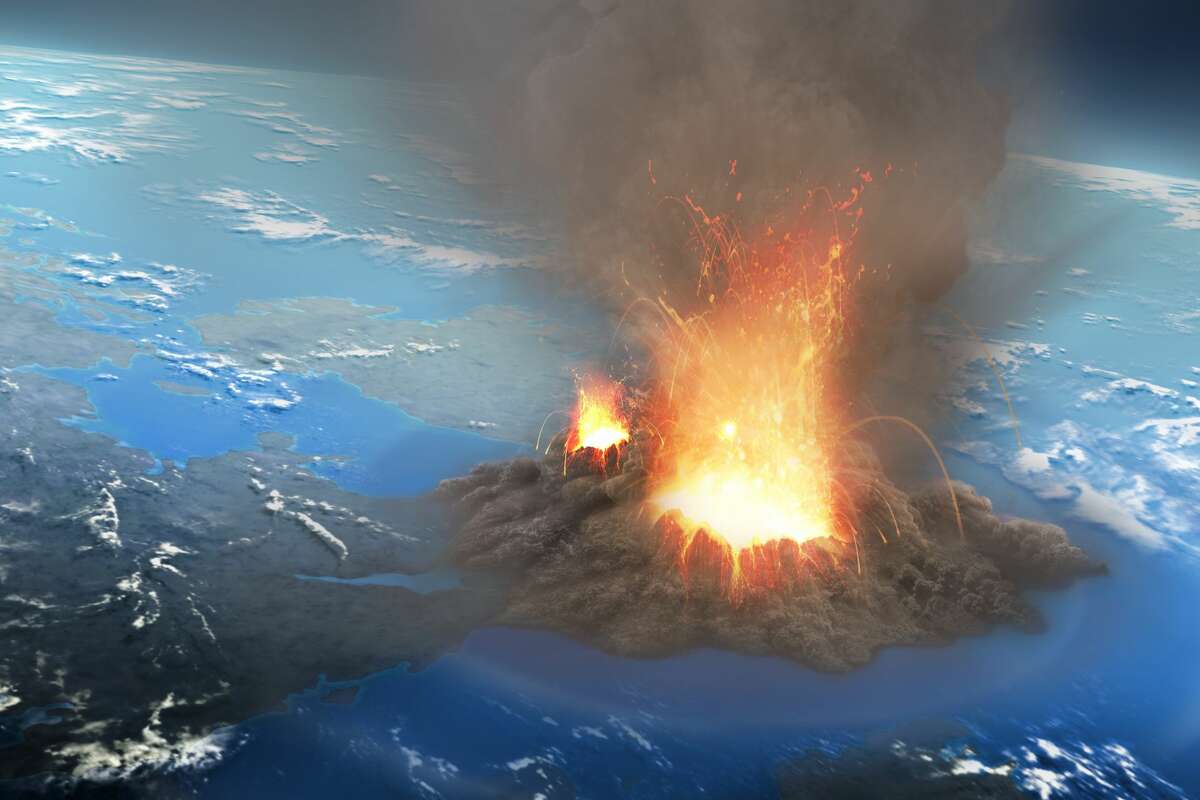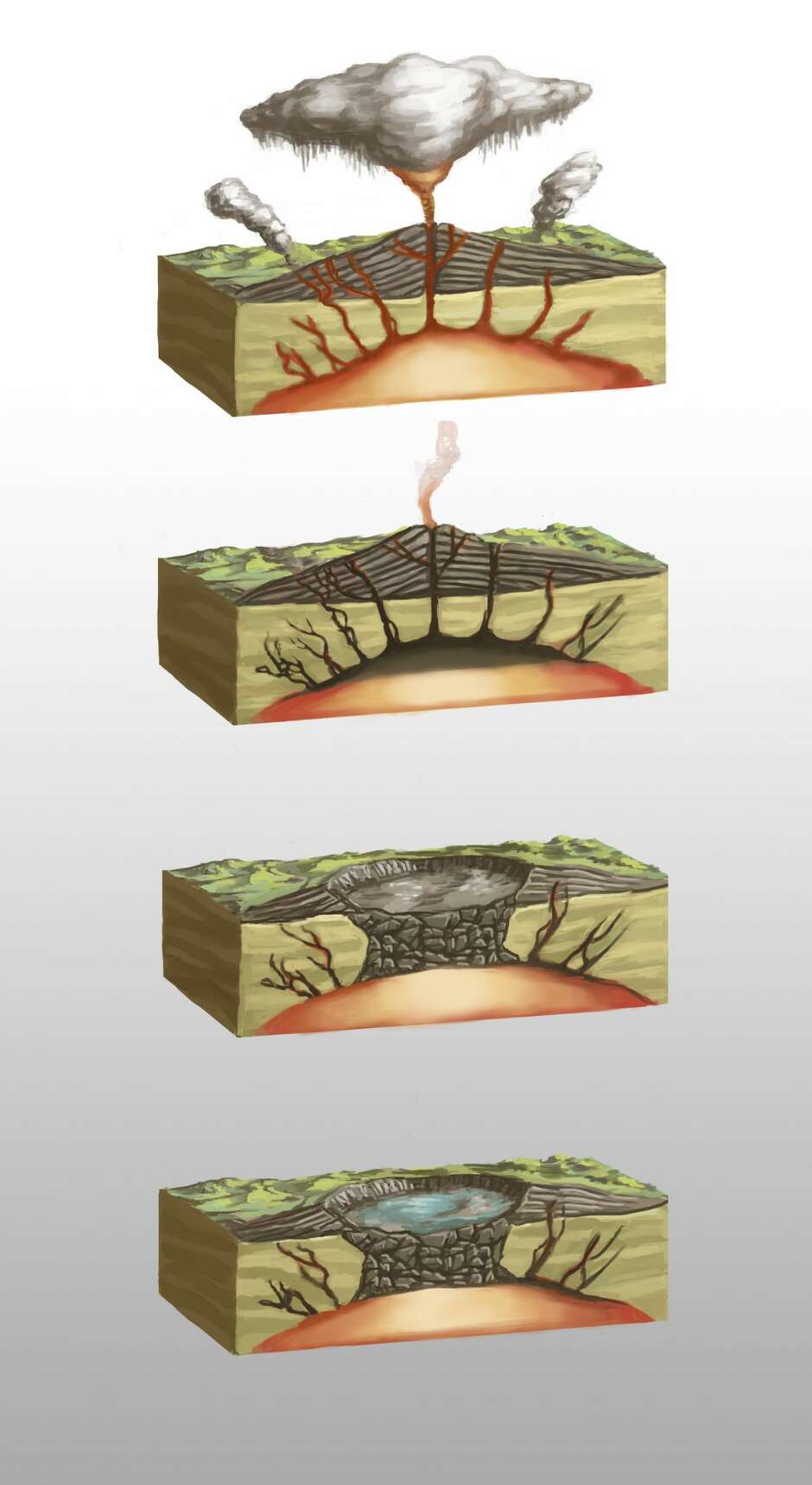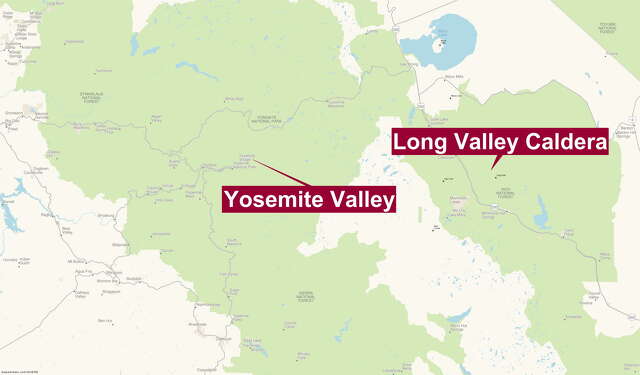Long valley still has some hot springs and thermal activity, but the lava dome is near crystalline and unlikely to precipitate a massive VEI 7 event such as 760,000 years ago. Its not over a hot spot like Hawaii and Yellowstone.
Nope, that lava dome started melting some time back now. Here's one article and the second link is to a paper that I'm not sure if I'm allowed to post here or not.
Yes, Yellowstone has all those famous steaming pots and geysers, but Long Valley has many...

www.sfchronicle.com
California supervolcano may be as dangerous as Yellowstone's
Jake Ellison, SFGATE - Seattle PI contributor Oct. 1, 2018 Updated: Sep. 28, 2018 1:35 p.m.
1of37Illustration of a supervolcano eruption seen from an altitude of around 40 km. These eruptions form ash clouds that can reach tens of kilometres into the sky. Eventually the ash cloud collapses, sending avalanches of dust, ash and incandescent rock away from the eruption site at high speeds, hugging the ground in a pyroclastic flow.Photo: MARK GARLICK/SCIENCE PHOTO LIBRA/Getty Images/Science Photo Libra
2of37Comparison of volumes of magma erupted from selected volcanoes within the last 2 million years.Photo: USGS
3of37Illustration showing the formation of a caldera. At top a full magma chamber under pressure causes eruption. Second from top, magma chamber is now partially emptied and pressure is released. Third from top, volcano collapses into top of the magma chamber beginning to form the caldera. At bottom, large crater forms with a steep rim and usually Photo: Spencer Sutton/Getty Images/Science Source
Every time a geyser coughs in Yellowstone National Park someone publishes a story with a dire headline about the end of the world. To wit: "
Yellowstone volcano WARNING: Supervolcano WILL erupt and could END human civilisation." And then the rest of the Internet freaks out in paroxysms of armageddon delight.
But what about the Long Valley Caldera, which is also considered a supervolcano by the volcanologists at the USGS?
Not even a study published in August in the journal GeoScienceWorld titled "
Seismic evidence for significant melt beneath the Long Valley Caldera" could rattle alarmists from their Yellowstone fixation.
The study by a cadre of USGS experts at the California Volcano Observatory in Menlo Park reports that "three-dimensional full-waveform tomography"--er, reading sound waves bouncing around deep in the earth--revealed a reservoir under the Long Valley Caldera of more than 240 cubic miles of magma with 27 percent of it hot enough and the right composition to be liquid.
GALLERY: Check out the slideshow above for more details on the supervolcanoes of America
If it all blasted out of the ground, that would make Long Valley - located south of Mono Lake near the Nevada border - as cataclysmic as the Yellowstone supervolcano's last supereruption 640,000 years ago that formed its current 35-by-50 mile caldera. A caldera is the depression left after an eruption so large the ground surface collapses over a wide area.
Long Valley Caldera supervolcano near Yosemite National Park.
Photo: Hearst Newspapers
Cheated?
So, where's the screaming headlines and graphic-rich documentaries? Yes, Yellowstone has all those famous steaming pots and geysers, but Long Valley has many hot springs, fumaroles and even a geothermal system that fuels the Casa Diablo power plant. And, both regions have plenty of much smaller volcanic activity, from quakes to minor eruptions of magma, gas and rocks. Perhaps Long Valley needs a better publicist.
Giant magma reservoir mapped beneath Yellowstone supervolcano
To be fair to Yellowstone, Long Valley's last mega-eruption, the Bishop Tuff eruption 760,000 years ago, kicked out a paltry 150 cubic miles of magma in only the third largest supereruption in geologically recent times.
RELATED: These are the California volcanoes most likely to erupt first
And, the Long Valley researchers estimate in their new paper, "the reservoir currently contains enough melt to support another supereruption comparable in size" to it's last eruption.
That blast created Long Valley's current 20-by-10 mile caldera and was more than 2,000 times larger than the 1980 eruption of Mount St. Helens, a
USGS pamphlet on Long Valley states. The pamphlet adds, "Rapid flows of glowing hot ash (pyroclastic flows) covered much of east-central California, and airborne ash fell as far east as Nebraska. The Earth's surface sank more than 1 mile into the space vacated by the erupted magma."
Yellowstone's largest and oldest-known effort shot out some 600 cubic miles of material. In all, three "extremely large explosive eruptions have occurred at Yellowstone in the past 2.1 million years with a recurrence interval of about 600,000 to 800,000 years,"
according to the USGS. It's ash plumes went much farther. (As you can see in a graphic in the gallery above.)
Bigger picture and cautions
The United States is home to three active supervolcanoes, the
USGS has determined: The famous Yellowstone, Long Valley and the Valles Caldera in New Mexico.
Valles is the oldest of the three and had its big event 1.25 million years ago, creating a 12-by-14 mile caldera when it blasted 70 cubic miles of magma, according to its
USGS info page.
They are all three considered active, so I imagine all three going off would definitely be a run-don't-walk situation.
But will they? Will any of them?
Unknown.
"While supervolcanoes like Long Valley are rare, understanding the volume and concentration of melt in their magma reservoirs is critical for determining their potential hazard," authors of the Long Valley study wrote. They added all the caveats of how the characteristics of the magma and its chamber are still not known and could change their assessment of its volume.
And, the volcanologists working on all these supervolcanoes say another supererruption at any of them is both very unlikely and at worst very far into the future. There will also be plenty of very noticeable warning signs.
"Emissions of volcanic gas, as well as earthquake swarms and ground swelling, commonly precede volcanic eruptions. When they precede an eruption of a 'central vent' volcano, such as Mount St. Helens, Washington, they normally last only a few weeks or months. However, symptoms of volcanic unrest may persist for decades or centuries at large calderas, such as Long Valley Caldera. Studies indicate that only about one in six such episodes of unrest at large calderas worldwide actually culminates in an eruption," the
USGS says.
Nevertheless, all three areas are heavily monitored because such an eruption is one of those high-consequence events that while unlikely or unlikely anytime soon, would be a big deal.
We, our plants and everything else would be covered in ash. Air traffic would come to a halt over much of the world, the chemical composition of the gas emitted could be deadly, a global climate chill would set in for years, maybe decades. It could essentially amount to the worst thing to happen to human society so far.
Jake Ellison can be reached at jakeellisonjournalism@gmail.com. Follow Jake on Twitter at twitter.com/Jake_News.

pubs.geoscienceworld.org



